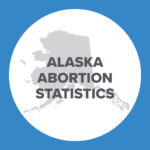Questions and Answers on Born-Alive Abortion Survivors
Originally published on April 12, 2021 and has been updated on January 27, 2023.
To view this fact sheet as a PDF, see: Fact Sheet: Questions and Answers on Born-Alive Abortion Survivors
Do Late-Term Abortions Really Happen in the U.S.?
Yes. The definition of a late-term abortion is imprecise – and shifting. The gestational age at which an unborn child can survive outside the womb, with medical support, is decreasing, with instances of survival occurring at 22 weeks gestation or slightly earlier. While most states report a gestational age range at which abortions are performed, several jurisdictions that are hospitable to late-term abortions do not collect or publish such data nor do they transmit it to the Centers for Disease Control and Prevention (CDC). Nonetheless, reports by the CDC suggest that roughly 1% of all U.S. abortions are carried out at or after 21 weeks of gestation – as many as 10,000 late-term abortions per year.
Although the Supreme Court’s decision in Dobbs v. Jackson has given states the ability to set limits on abortion, and many states have enacted protections early in pregnancy, late-term abortions are perfectly legal in much of the United States. Many state abortion laws adhere to the terms of Roe v. Wade and Doe v. Bolton, which require a “health exception” all the way to birth. This exception, spelled out in the Doe v. Bolton ruling, defines “health” as including mental health, financial concerns, and familial circumstances – in short, abortion on demand. In more than 20 states current law either includes such a wide-open health exception or mentions no limit whatsoever. On January 22, 2019, New York State, which previously had a 24-week limit in effect, lifted that limit and affirmed what amounts to elective abortion until birth. A 2014 study by the Charlotte Lozier Institute found that the United States is one of just seven nations in the world – including North Korea and the People’s Republic of China – to allow elective abortion after 20 weeks of pregnancy. A 2017 Fact Check by The Washington Post rated this finding “true.”
Aren’t Late-Term Abortions Only Performed When the Baby Can’t Survive Anyway?
Relatively few late-term abortions are performed on babies who have fatal birth defects. Recent research on women seeking abortions in the third trimester shows that many women undergoing late-term abortion are doing so for the same reasons as women who get abortions earlier in pregnancy. Similarly, another study published in 2013 found that women undergoing late-term abortions offered the same reasons as their counterparts who were seeking earlier abortions. Although the study did not include women undergoing abortions due to fetal anomaly or risk to their own lives, a significant limitation, one of the study’s authors is quoted as stating “that abortions for fetal anomaly ‘make up a small minority of later abortion.’” Additionally, research published by a prolific late-term abortion provider shows that abortions performed due to an abnormality in the baby made up a minority of all late-term abortions performed at his practice. Many late-term abortions are performed on healthy babies who could survive outside the womb with proper care.
Are Abortion Survivors a Myth Made Up by Pro-Life Politicians?
Frequently, the unborn baby is killed at the start of a late-term abortion procedure, primarily through the administration of a lethal injection into the amniotic sac or baby’s head or heart or severing the umbilical cord so that the unborn child will bleed to death. However, 69% of late-term abortion providers report that they do not induce fetal demise before beginning the abortion, and not all methods are equally effective. The survival of a baby intended for abortion creates a host of potential legal and medical problems for the abortion practitioner. A watershed article that appeared in the Philadelphia Inquirer in 1981 referred to the survival of a baby after abortion as the “dreaded complication.”
The Inquirer article quoted Dr. Willard Cates, then-director of abortion surveillance at the CDC, as estimating “that 400 to 500 abortion live births” occurred every year in the United States. These numbers “are little known,” the article stated, “because organized medicine, from fear of public clamor and legal action, treats them more as an embarrassment to be hushed up than a problem to be solved.” The numbers were also likely low. Cates added, “It’s like turning yourself in to the IRS for an audit. What is there to gain? The tendency is not to report because there are only negative incentives.”
In the years since Dr. Cates’ admission, more recent testimony to the accidental birth of babies during abortions has come to light, acknowledged by abortion providers, alluded to by abortion advocates, reported by a handful of states, and sometimes shared by the survivors themselves.
- In an undercover video released in April 2013, a D.C. abortionist admitted he would not intervene to save an abortion survivor. When asked about a baby being born alive during an attempted abortion, he said, “usually, at this point in your pregnancy, it’s too early to survive, usually. It will expire shortly after birth…it’s all in how vigorously you do things to help a fetus survive at this point.” Later he said, “we would not help it [the baby]. Let’s say. We wouldn’t—we wouldn’t—uh, intubate, let’s say.”
- In another undercover video released in March 2017, a former Planned Parenthood medical director said that in order to determine whether to provide medical intervention for these babies, “You need to pay attention to who’s in the room.”
- A Planned Parenthood lobbyist in 2013 opposed the Infants Born Alive Act in Florida, saying, “We believe that, you know, any decision that’s made should be left up to the woman, her family, and the physician.” Abortion advocates leapt to the lobbyist’s defense, targeting the Infants Born Alive Act’s “fundamentally flawed assumption that this type of situation is a real risk” and asserting that born-alive infants were “incredibly unlikely.” However, since 2013 when the Act was signed into law, 42 babies have been born alive during abortions in Florida.
- In a 2019 interview with WTOP in Washington, D.C., in which he endorsed a permissive late-term abortion bill, Virginia Governor Ralph Northam dismissed concerns about abortions performed while a woman is giving birth, explaining, “The infant would be delivered; the infant would be kept comfortable; the infant would be resuscitated if that’s what the mother and the family desire, and then a discussion would ensue between the physicians and the mother.”
- Abortion survivor Melissa Ohden testified to the House Judiciary Committee in 2015, “You wouldn’t know it by looking at me today, but in August of 1977, I survived a failed saline infusion abortion…. I know where children like me were left to die at St. Luke’s Hospital—a utility closet. In 2014, I met a nurse who assisted in a saline infusion abortion there in 1976, and delivered a living baby boy. After he was delivered alive, she followed her superior’s orders and placed him in the utility closet in a bucket of formaldehyde to be picked up later as medical waste after he died there, alone.”
- Gianna Jessen, another adult survivor of abortion, also testified to the House Judiciary Committee in 2015, stating, “I was delivered alive in an abortion clinic in Los Angeles on April the 6th, 1977. My medical records state: ‘Born alive during saline abortion’ at 6 am. Thankfully, the abortionist was not at work yet. Had he been there, he would have ended my life with strangulation, suffocation, or leaving me there to die.”
- Many young survivors have grown up and chosen to go public with their stories. The testimonies of individuals who were born alive during abortions are featured on https://abortionsurvivors.org/. A Fox News interview with Ohden and two other abortion survivors, one of whom testifies he lost an arm in the process, aired on February 11, 2019.
- Late-term abortionist Kermit Gosnell flouted Pennsylvania law for years before suspicion of the illegal sale of drugs caused the FBI and the Drug Enforcement Administration to raid his “House of Horrors” in 2010. Most disturbing among what they found was evidence of the intentional killing of babies who had survived Gosnell’s abortion procedures. These “snippings,” as he called them, involved using a scissors to sever the spine of babies who survived his brutal abortions.
- In 2005, a mother delivered her 23-week-old baby in the toilet at EPOC Clinic in Orlando, Florida, and was shocked to see him move. Abortion staff not only refused to help but turned away paramedics, whom her friend had notified by calling 911. Angele could do no more than helplessly sit on the floor rocking and singing to her baby for 11 minutes until he died.
- In 2006, Sycloria Williams delivered her 23-week-old baby on a recliner at A Gyn Diagnostic Center in Hialeah, Florida. When she began breathing and moving, abortion clinic owner Belkis Gonzalez cut the umbilical cord and zipped her into a biohazard bag, still alive.
- In 2013, Jill Stanek testified before the House Judiciary Committee about her experience as a registered nurse in the labor and delivery department at Christ Hospital in Oak Lawn, Illinois, where she discovered babies being aborted alive and shelved to die in the department’s soiled utility closet. She said, “I was traumatized and changed forever by my experience of holding a little abortion survivor for 45 minutes until he died, a 21/22-week-old baby who had been aborted because he had Down syndrome.”
Isn’t This Just Anecdotal Evidence?
While much of what we know about born-alive abortion survivors comes from admissions by abortion providers and accounts from the survivors themselves, multiple peer-reviewed papers have documented that abortion has the potential to result in live births and that these births really do occur. One study published in Obstetrics & Gynecology in 2018 reviewed 241 late-term abortions on unborn babies with abnormalities between 20-24 weeks gestational age and reported that unless the unborn baby was killed first, more than half the babies were born alive. A 2005 case report in the Journal of Obstetrics and Gynaecology documented the medical history of a little boy who survived an abortion, and a paper published in the British Journal of Obstetrics and Gynecology in 2005 reviewed 31 cases in a six-year period in which babies died after being born alive during abortions.
How Often Do Late-Term Abortions Result in Live Births?
Because of gaps in national and state abortion reporting, and the continued opposition of abortion advocacy groups to more accurate and detailed reporting, relatively little is known about how often survival now occurs after abortion. The number is certainly not zero. The Charlotte Lozier Institute has engaged in a multi-year effort to obtain abortion data from the 49 jurisdictions that voluntarily provide annual summaries of abortion incidence to the CDC. Only eight states have publicly reported or responded to requests for statistics on children marked for abortion who were born alive during abortion procedures (Arizona, Arkansas, Florida, Indiana, Michigan, Minnesota, Oklahoma, and Texas). In just four of these eight states (Arizona, Florida, Minnesota, and Texas), 35 children were born alive during attempted abortions in 2020 and 2021. Additionally, Florida reported eight babies born alive in 2022.
The CDC estimates that between 2003 and 2014, at least 143 babies died after being born alive during abortions, and the CDC acknowledges it is very possible that this undercounts the actual number. Additionally, the CDC report counts only babies who were born alive during abortions and then later passed away – it does not include babies who survived attempted abortions and are still alive.
Babies who survive abortions are not unique to the United States. The Canadian Institute for Health Information (CIHI) has released data to a Canadian researcher showing that at least 1,155 babies were born alive during late-term abortions between FY2014 and FY2021. CIHI has confirmed for CLI and other researchers that these babies were born alive during induced abortions. In fact, Canadian researchers caution that babies who are born during abortions and then die are increasing Canada’s infant mortality rate. With a smaller population, Canada reports far fewer abortions than the United States, so it is likely that even more babies survive abortions in the U.S.
Don’t State Laws Already Protect Babies Born Alive During Abortions?
Only 18 states have laws offering robust protections to babies who survive abortions, although others have recently taken steps to strengthen their laws. However, many of the states with the most extreme abortion laws do not afford such protection to born-alive babies. Alaska, Colorado, New Jersey, New Mexico, Oregon, Vermont, and the District of Columbia all permit abortion at any time for any reason, yet none of these states has established legal protections for born-alive infants. Some states like New York and Illinois have even enacted laws that eliminated previous protections for babies born alive. A strong federal law is necessary to ensure that all infants who survive abortions are protected, not just those born in certain states.
As Melissa Ohden, abortion survivor and long-time advocate of the Born Alive Abortion Survivors Protection Act, wrote to the Daily Signal, “No one’s life, no survivor’s care, should be dependent upon who is working that day. A law that clearly states that abortion survivors have equal protection and that there are legal consequences for abortionist’s failing to do so is important and necessary.”
Don’t Children Rescued After Abortion Do Poorly – at Great Medical Cost?
Objections to saving the life of any person, particularly a child victimized by abortion, are cruel and ultimately an argument against inducing the abortion in the first place. The intrinsic value of human beings of all abilities is a key American ideal, enshrined into law in the Americans with Disabilities Act, and babies who survive abortions are just as much a part of the human family. As such, all babies born alive should be assessed and then receive the appropriate degree of interventions. Even if a baby is born too early to survive outside the womb, or suffers from life-limiting abnormalities, perinatal hospice and life-saving treatments may be available to provide care for the child. No baby should be abandoned to die alone in a cold utility closet, no matter his or her gestational age, ability, or level of development.
Babies continue to be saved at earlier gestational ages, and medical specialists are continuing to improve treatment protocols and to save lives with lower rates of impairment. Over the last few years, doctors report increasing rates of survival of very pre-term babies at 22-23 weeks of gestation and younger. Now, e.g., 60% of infants born at 22 weeks who receive active hospital treatment will survive, and if properly cared for, these babies not only survive but thrive, without neurological impairment. Little Micah Pickering, who was born in 2012 at 22 weeks of gestation, received national attention when he traveled to Washington as a five-year-old to advocate for the Pain-Capable Unborn Child Protection Act to safeguard 20-week-old unborn babies. In 2014, Lyla Stensrud became one of the earliest premature babies ever to survive when she was born at 21 weeks of gestation. In 2020, healthy six-year-old Lyla attended the ribbon-cutting ceremony of a museum exhibit featuring her amazing story. In 2021, Curtis Means became the current world record setter, born at 21 weeks 1 day.
Advances in science and medicine do not occur when judgments are made that pre-emptively consign certain children to medical neglect. Babies who survive abortions can defy the odds – if they are only given a chance.
“Horrific crimes are taking place in abortion facilities around the country. Children born alive are denied medical care and left to die – cold, alone, abandoned and discarded like medical waste.” – SBA List’s National Campaign Chair Jill Stanek, a former nurse who witnessed late-term babies born alive during abortion procedures and left to die























